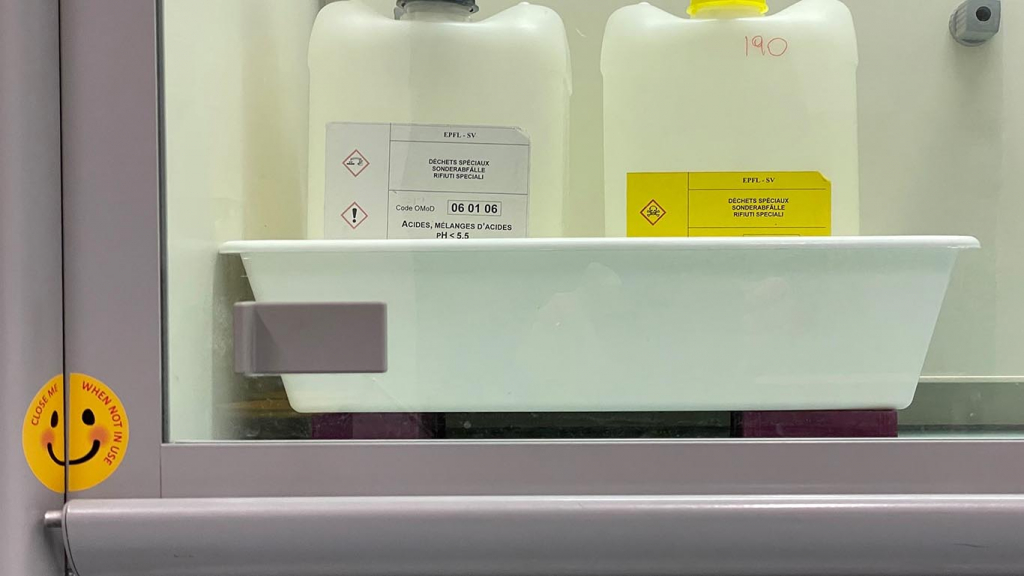Fume hoods provide protection from vapours, splashes, and impacts caused by chemicals and their reactions. At EPFL, we control the level of protection of the fume hoods.
The linked video illustrates how improperly operated or set-up fume hoods present an additional hazard by creating a false sense of protection. Understanding how they work, and adhering to best practices, is essential to ensuring genuine safety when handling chemicals.
Identify how your fume hood works. Please note! We have 3 different types of fume hoods on the EPFL campus
-
- Variable airflow fume hoods
- Manual fume hood with timer
- Permanently working fume hood (in progress)
Prior to using a chemical fume hood, always check that it is drawing air
The check is carried out by means of a pressure indicator (pressostat) or by a light indicator
Discontinue work and close all containers with hazardous chemicals if the alarm sounds. If possible, mute the alarm and put an out-of-order sign on the hood.
If the alarm remains, contact maintenance so that they fix it:
- Lausanne, Sion, Neuchâtel:
021 693 4000 ou 34000 (from a landline)
Alarm and Engagement center - Geneva: [email protected]
Open the sash only as much as is required to perform your work comfortably. Position the sash to maximize protective shielding
Never open the sash beyond the indicated position when there is a risk of chemical exposure.
Perform all work at least 15 cm into the fume hood. Do not store items near the opening where they interrupt airflow and pose a spill hazard.
NEVER put your head in the hood when there is a risk of chemical exposure.
Minimize the number of objects stored in the hood – keep at least 50% of the working surface clear, if possible.
Place containers and equipment toward the sides of the hood to reduce obstruction of the exhaust slots.
If possible, elevate equipment and containers two to three inches above the working surface using perforated or slotted shelving to minimize disruption to the airflow
When the fume hood is not in use, lower the sash. This will greatly reduce power consumption and the sash will act as a splash guard
